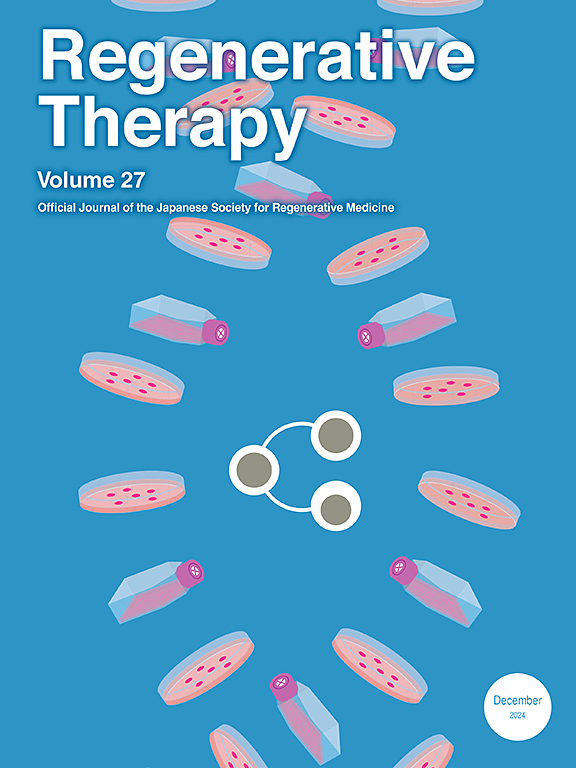Apoptotic vesicles inhibit bone marrow adiposity via wnt/β-catenin signaling
IF 3.4
3区 环境科学与生态学
Q3 CELL & TISSUE ENGINEERING
引用次数: 0
Abstract
Background
There is currently increasing focus on aging-related diseases. Osteoporosis is a common disease the incidence of which increases with age. In older patients with osteoporosis, bone marrow mesenchymal stem cells (BMMSCs) have a decreased capacity for osteogenesis and an increased capacity for adipogenesis, causing excessive accumulation of adipose tissue in the bone marrow. Therefore, means of reducing bone marrow adiposity may have therapeutic potential for osteoporosis. Apoptotic vesicles (apoVs) participate in a wide range of physiological processes and have been shown to have therapeutic effects in a variety of diseases. The principal objective of this study was to examine the special properties and regulatory mechanisms of BMMSC-derived apoVs in the treatment of bone marrow adiposity.
Results
The results showed that apoVs could decrease bone marrow adiposity in osteoporotic mice and prevent adipogenic differentiation of MSCs by activating the Wnt/β-catenin pathway.
Conclusion
New apoV-based therapies have potential for the treatment of bone marrow adiposity in patients with aging-related osteoporosis and may be further applicable to the treatment of obesity and aging-related diseases.

凋亡小泡通过wnt/β-catenin信号抑制骨髓肥胖
目前,人们越来越关注与衰老有关的疾病。骨质疏松症是一种常见病,其发病率随年龄增长而增加。在老年骨质疏松患者中,骨髓间充质干细胞(BMMSCs)的成骨能力下降,而脂肪生成能力增加,导致骨髓中脂肪组织过度积累。因此,减少骨髓脂肪的方法可能具有治疗骨质疏松症的潜力。凋亡囊泡(apoVs)参与广泛的生理过程,并已被证明在多种疾病中具有治疗作用。本研究的主要目的是研究骨髓间充质干细胞衍生的载脂蛋白治疗骨髓肥胖的特殊特性和调控机制。结果结果表明,apoVs可通过激活Wnt/β-catenin通路,降低骨质疏松小鼠骨髓脂肪,抑制MSCs的成脂分化。结论以载脂蛋白为基础的新疗法具有治疗老年性骨质疏松症患者骨髓肥胖的潜力,并可能进一步应用于肥胖和老年性疾病的治疗。
本文章由计算机程序翻译,如有差异,请以英文原文为准。
求助全文
约1分钟内获得全文
求助全文
来源期刊

Regenerative Therapy
Engineering-Biomedical Engineering
CiteScore
6.00
自引率
2.30%
发文量
106
审稿时长
49 days
期刊介绍:
Regenerative Therapy is the official peer-reviewed online journal of the Japanese Society for Regenerative Medicine.
Regenerative Therapy is a multidisciplinary journal that publishes original articles and reviews of basic research, clinical translation, industrial development, and regulatory issues focusing on stem cell biology, tissue engineering, and regenerative medicine.
 求助内容:
求助内容: 应助结果提醒方式:
应助结果提醒方式:


